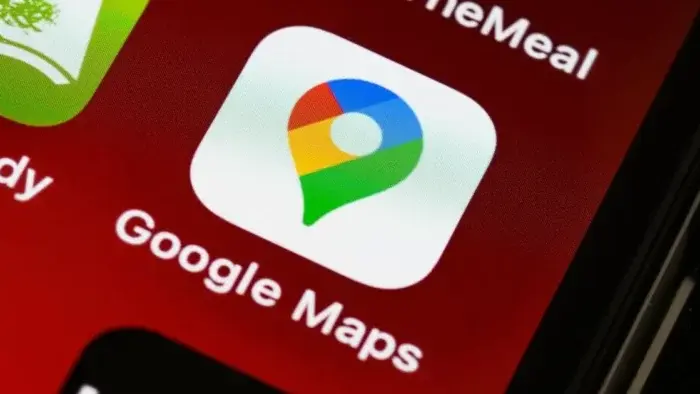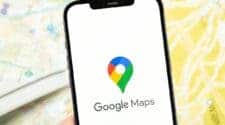Google Maps is one of the most widely used navigation apps worldwide, providing users with real time directions, location based recommendations, and traffic updates. But while the app is free to use, there’s a trade off: Google collects a significant amount of data from users. This data collection helps Google improve its services, offer personalized experiences, and support its advertising model. While some of the information gathered is necessary for the app’s functionality, much of it is also optional or can be limited with specific privacy settings.
Understanding Google Maps: The Data it Collects and How it Uses It
In this article, we’ll take a closer look at what data Google Maps collects and how it uses that data, based on Google’s privacy policy and the security section of the app on Google Play.
Navigation Data: Improving Traffic Updates
One of the primary benefits of using Google Maps is the app’s ability to provide real time traffic conditions. This data comes directly from users’ navigation activities, allowing Google to analyze patterns and determine which areas are congested and which are clear. If you’ve ever noticed that certain sections of your route are highlighted in red to indicate heavy traffic, that’s thanks to this data.
For example, an artist in Berlin famously exploited this system by filling a cart with mobile phones, simulating a traffic jam on Google Maps where none existed in reality. This incident highlights how Google Maps uses navigation data to update traffic conditions, offering a significant advantage over competitors. However, it’s important to note that this navigation data isn’t tied directly to your account but is anonymized.
Here are some of the key pieces of navigation data Google collects:
- Your GPS location
- Routes you take while navigating
- Data from mobile sensors, such as barometers, to gauge altitude
Location Data: More Than Just Directions
It’s no surprise that Google Maps needs access to your location, especially if you’re using features like real time navigation or searching for places nearby. However, Google uses your location data for more than just basic app functionality. Beyond helping you find your way, location data is used for advertising, fraud prevention, and personalization.
Google distinguishes between two types of location data:
- Precise Location: Used for navigation, traffic updates, and app functionality. Google also uses this information to personalize your experience, offering suggestions based on where you are or where you’ve been.
- Approximate Location: Used for broader purposes like advertising and marketing, without pinpointing your exact location.
In general, most apps that offer location based services need to access your location data, but it’s worth noting that Google Maps uses it for purposes beyond getting you from point A to point B.

Search and Direction History: Your Activity is Recorded
However, Google provides an option to turn off this feature if you don’t want your searches to be saved. When enabled, the following data is collected:
- Your common routes and frequent locations
- Places you’ve saved, such as home, work, or favorite restaurants
- Travel routes and search history
- Service requests, like calling a business from within Google Maps
- Sites you’ve followed locally
- Responses to pop-up questions (e.g., “Is this place crowded right now?”)
Contacts: Mapping Your Friends
Google Maps can also access your contacts. While this isn’t a requirement for using the app, Google offers an option to integrate your contact list to display their addresses on the map or share your location with them. This feature is entirely optional and you can turn it off. If you prefer more privacy, using Google Maps without signing in or in incognito mode prevents this data from being shared.
Photos, Videos, and Reviews: Public Contributions
Google Maps relies heavily on user contributions for reviews, photos, and even map modifications. If you submit reviews, upload photos, or suggest changes, all of this information is stored by Google. While it helps improve the app for other users, it’s important to remember that these contributions are public and visible to everyone unless you delete them.
Here’s a breakdown of the content Google collects from user contributions:
- Reviews you write for places you’ve visited
- Photos you upload, such as restaurant dishes or tourist attractions
- Information about products, services, or activities you’ve added
- Answers to questions about a location (e.g., “Does this restaurant have outdoor seating?”)
Voice Recordings: The Role of Voice Commands
If you use voice search or request directions via voice commands, Google records these audio inputs. This feature, although convenient, has sparked privacy debates in recent years. Google claims that it primarily uses voice recordings to improve app functionality, such as enhancing search accuracy. However, the company also notes that it uses this data for analytics and personalization, which can be more concerning for users seeking greater privacy.
If you prefer not to have your voice recorded, the option to turn off voice search is available.
Application Activity: Tracking Everything You Do
Virtually every interaction you have with Google Maps gets tracked by the company. While this might seem invasive, Google often tracks this data for diagnostic purposes to identify issues with the app. However, some of the data Google collects, like information about installed apps, raises more controversy. For instance, Google Maps checks which apps you have installed for functional reasons (like integrating with Spotify). But it also uses this data for fraud prevention and security.
The app collects the following types of activity data:
- Your interactions with the app (e.g., clicks, swipes)
- Installed applications (for integration purposes)
- Device identifiers (used for advertising and security)

Personal Data: What Google Knows About You
Finally, Google Maps collects personal information, most of which links to your Google Account. If you use the app without signing in or in incognito mode, the app attaches less data to your account. However, when you log in, Google stores personal data such as your name, email, user ID, and phone number. Google mainly uses this information for communication and app functionality, but it can also serve advertising purposes.
Here’s a summary of the personal data Google collects:
- Your name, email, and user ID
- Home address or other saved addresses
- Phone number
Conclusion: A Balancing Act Between Convenience and Privacy
Google Maps offers an unparalleled level of convenience and functionality. But it comes with the trade off of sharing a significant amount of personal data with Google. The company uses this information to improve its services, provide personalized experiences, and support its business model through advertising. While we can minimize some of this data collection is optional or can be through privacy settings, it’s important to understand what data you share and how Google uses that information.
If you’re concerned about privacy, consider adjusting your settings or using Google Maps in incognito mode. While you may lose some functionality, it offers a more private browsing experience.





